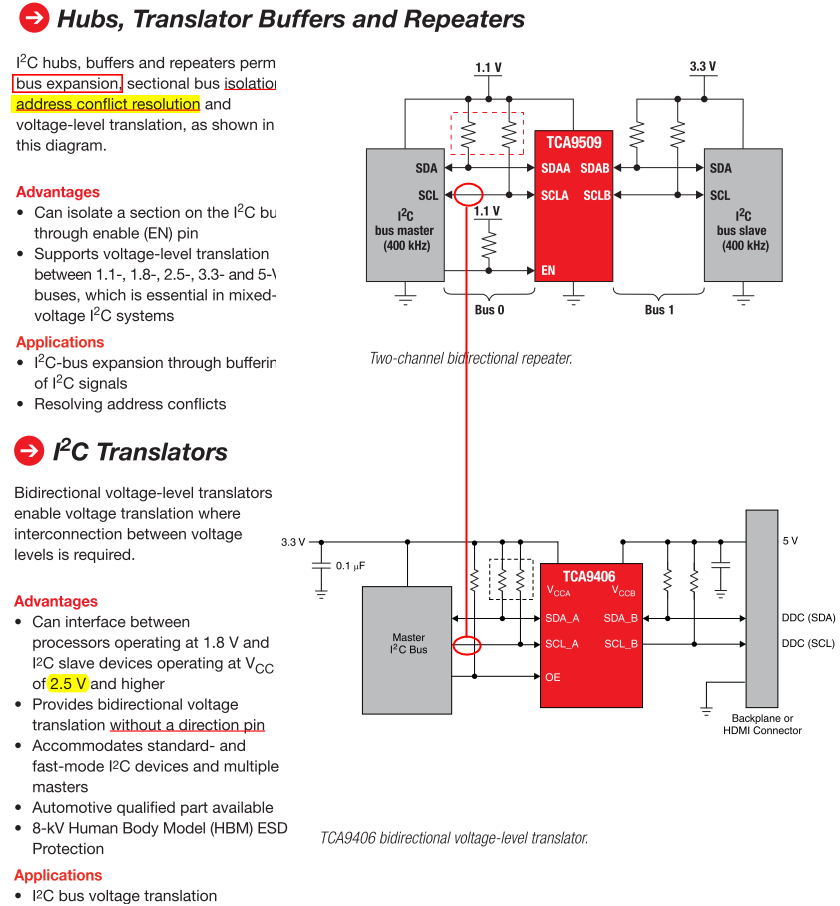Hi,
When comparing I2C interfaces devices, I see no clear difference between
1. Hubs, Translator Buffers and Repeaters; example: TCA9509
2. I2C Translator; example: TCA9406
In I2C Guide, between the (1) TCA9509 and (2) TCA9406, the only difference seems to be that in (1), SCLA is bi-directional. All others are the same.
And since both have enable pin (1)EN and (2)OE, the claimed advantage of (1) actually also exists in (2).
And regarding the name for (1):
1. Hub
2. Buffer
3. Repeater
I don't quite understand the meaning of each, and it seems that these three terms are somehow piled together. Could anyone explain the distinctiveness of each of them?

Tim Baker

